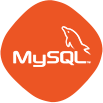How to to protect wordpress site from hackers
An open source resource is always vulnerable to all sorts of attacks. However most attacks can be blamed on lacunae within the security structure and operation flaws which can be easily prevented. It is often the fault of the website owner than WordPress.
Secure the login page and prevent brute force attacks
The standard WordPress login page URL is a universal secret. The backend of the website is its Achilles heel and the most common route of intrusion. The best way to prevent this is to customize the login page URL and just add/ wp-login.php or /wp-admin/ at the end of your domain name.
Set up website lockdown and ban users
Put a lockdown feature for failed login attempts. This will go a big way in solving brute intrusion attempts.
Use 2-factor authentication
Using two factor authentications is also a good measure to secure your website. It could be a regular password followed by a secret question, a code, a series of characters which change with date etc.
Use email as login
Using an e-mail instead of username is also one method to ensure security of your website Usernames are easily predictable while e-mails are unique and makes it a valid identifier for logging in.
Rename your login URL
WordPress login page can be accessed easily by default. Hackers can intrude by using software like Guess Work Database, i.e. a database of guessed usernames and passwords.
To change the login URL is an easy thing to do. By default, the WordPress login page can be accessed easily via wp-login.php or wp-admin added to the site’s main URL. Replacing the login URL will preempt 99% of direct brute force attacks.
Secure your admin dashboard
Secure your admin dashboard by password-protecting the wp-admin directory. Allow access to the dashboard by submitting two passwords. One protects the login page and the other protects the WordPress Admin area.
Use SSL to encrypt data
Incorporating the SSL certificate is a smart move which ensures the security of admin panel. It ensures secure data transfer between user browsers and the server.
Add user accounts with care
Multiple persons access the admin panel of any WordPress blog making it vulnerable to security threats. Therefore ensure that the users use strong passwords.
Change the admin username
Never use “admin” as the username for your main administrator account.
Monitor your files
Monitor any changes in the website files through via plugins like Wordfence, or iThemes Security.
Change the WordPress database table prefix
Change the WordPress database table prefix to something unique. Change wp- to some other term like mywp-, wpnew-, etc.
Back up your site regularly
Do not be complacent regardless of how secure your website is. Backup your website regularly.
Make strong passwords for the site’s database
Use the strongest passwords for the site’s database













